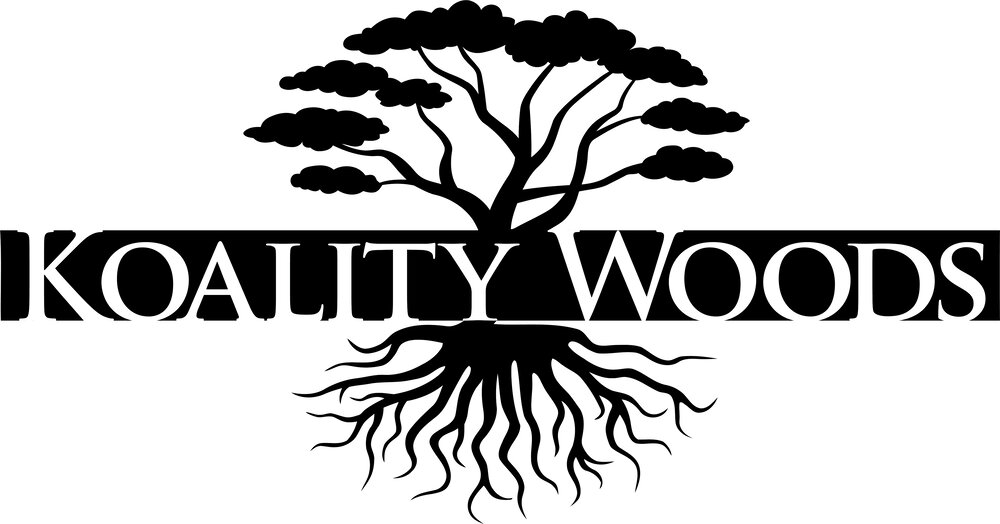Wholesale Lumber Pricing
Eligibility for our wholesale lumber pricing begins with a Minimum Order Quantity of 1,000 Board Feet (2.36 Cubic M).
We can supply you with logs, slabs, or lumber that has been edged or has the live edge left intact. Currently kiln drying services are not available as our kiln schedule is fully booked at the present time.


Hawaiian koa
Hawaiian Koa is one of the rarest woods in the world. There is an extremely limited supply and availability fluctuates as trees become available for salvage or harvest. Pricing is volatile and can only be given upon request based on the current market value at that time.
Scientific Name: Acacia koa
Uses: Veneer, furniture, cabinetry, musical instruments (especially guitars and ukuleles), canoes, gunstocks, carvings, bowls, and other turned/specialty wood objects
Price depends on current market value. Click below for an estimate.





Monkey Pod
Monkey pod is grown across all the Hawaiian islands in great abundance.
Color tends to be a golden to dark brown, sometimes with darker streaks. Sapwood is usually thin and yellow/white, clearly demarcated from the heartwood. Monkeypod is sometimes seen with highly figured curly or wild grain patterns.
Grain is usually straight, but can also be interlocked or wavy. Texture is medium to coarse, with medium to large open pores and a moderate natural luster.
Rated as durable to very durable regarding decay resistance, Monkeypod is also resistant to most insect attacks.
Monkeypod is generally easy to work with both hand and machine tools, though any interlocked grain may result in fuzzy or torn grain during planing operations. Glues and finishes well.
Scientific Name: Samanea saman
Uses: Veneer, plywood, millwork/trim, flooring, interior panels, carving, cabinetry, furniture, musical instruments (guitars and ukuleles), and other small specialty wood items
Price per BF (Green): $10




Japanese Sugi
Sugi is abundantly grown in Hawai’i and has a heartwood that’s typically reddish brown. The sapwood is straw colored and knots are common. It’s possible to char the wood using an ancient Japanese technique called yakisugi, which will increase its fire and rot resistance.
Sugi is a soft, aromatic cedar, that’s resistant to decay and smells amazing when milled in your shop! It’s easy to work with hand or machine tools and it glues, stains and finishes well.
Scientific Name: Cryptomeria japonica
Uses: fencing, siding, paneling, furniture, boatbuilding, yakisugi paneling
Price per BF (Green): $8




Hawaiian Cypress
Monterey Cypress is also abundantly grown in Hawai’i. The heartwood is a pale yellowish/reddish brown and the sapwood is paler. The grain is typically straight and sometimes small knots will create a more irregular grain patter. Cypress is rated as moderately durable in terms or rot resistance and insect attack.
Cypress is easy to work with hand and machine tools and as always areas with knots can be more problematic.
Scientific Name: Cupressus macrocarpa
Uses: Utility lumber, fence posts, musical instruments (flamenco guitars), furniture, boatbuilding, and turned objects
Price per BF (Green): $8



Norfolk Pine
Norfolk pine is ubiquitous on all the Hawaiian Islands. The heartwood is light brown, sometimes with a yellow or red hue. The paler sapwood isn’t clearly defined. Norfolk pine is commonly afflicted with blue/gray fungal staining and highly contrasting red knots that creates decorative pieces.
Norfolk pine is rated as non-durable to perishable with poor insect resistance meaning it’s best used indoors. Clear sections of the wood are easy to work with hand and machine tools and as always knots can be problematic.
Scientific Name: Araucaria heterophylla
Uses: Furniture, interior paneling (shiplap or T&G), plywood, turned objects and small specialty wood items
Price per BF (Green): $8




Swamp mahogany
Eucalyptus robusta was heavily planted in the early 1900s as an experimental sustainable species. Robusta is highly resistant to rot and insect attacks. The wood is very dense and highly durable.
The heartwood of swamp mahogany is light red to reddish brown in color and as the wood oxidizes it darkens to a rich reddish brown. The narrow 1-2 inch band of sapwood is gray to pale brown in dried lumber.
Scientific Name: Eucalyptus robusta
Uses: decking, tongue & groove or shiplap siding, flooring, poles
Properties:
Price per BF (Green): $8





Hawaiian Mango
Because of the spalting that is commonly present, the wood can be a kaleidoscope of colors. Under normal circumstances, heartwood is a golden brown, while other colors such as yellow and streaks of pink and/or black can also occur. Paler sapwood is not always clearly defined. Curly or mottled grain patterns are also common.
Mango is rated anywhere from moderately durable to perishable. However, Mango is also susceptible to both fungal and insect attack. If interlocked or wild grain is present, tearout is common when machining.
Scientific Name: Mangifera indica
Uses: tonewood for guitar and ukuleles, furniture, cabinetry, flooring, veneer, turned objects
Price per BF (Green): $10




Chocolate Heart Albizia
Albizia is in extremely fast growing tree in Hawai’i and it’s considered an invasive species as it quickly dominates canopies and outcompetes shade intolerant native species.
Heartwood is medium to dark reddish brown, frequently with bands of lighter and /or darker colored wood. Contrasting sapwood is pale yellow. Heartwood color tends to darken with age.
Rated as non-durable to rot resistance - this wood will need durable finishes to protect the final product; dry wood is reported to be resistant to termites. Moderately easy to work, though interlocked grain can cause tearout during surfacing operations. Albizia turns, glues, and finishes well.
Scientific Name: Albizia odoratissima
Uses: furniture, flooring, veneer, turned objects, interior panels (shiplap or T&G)
Price per BF (Green): $10
